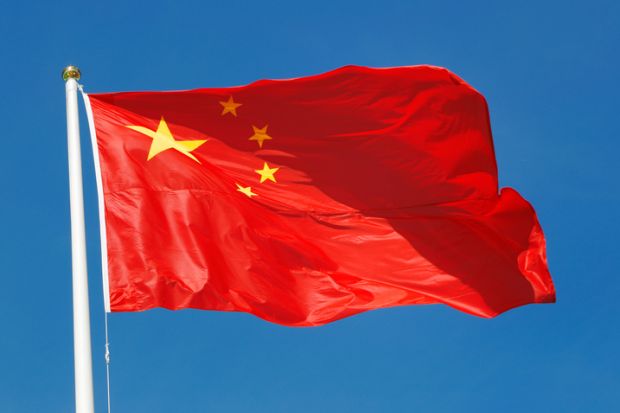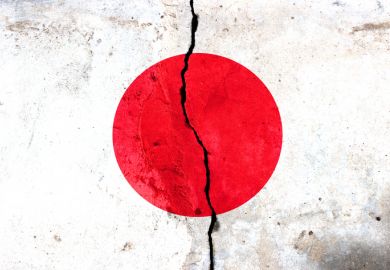China has continued its rapid ascent in high-quality research with a large leap in output in the annual Nature Index tables, while the UK’s top performing universities have notably fallen back.
The country’s share of authorship in high-quality papers, as measured by the index, went up more than 13 per cent in the latest table.
Meanwhile, all the other major developed research nations fell back in terms of their authorship share, with the UK dropping 4.1 per cent, although it is still fourth in the table after the US (down 1.4 per cent), China and Germany (down 2.1 per cent).
The Nature Index tables for 2018 analyse research published in 82 high-quality natural science journals, selected by two independent panels of scientists, for the 2017 calendar year. Rankings in the tables are determined by looking at the relative contribution of each country and institution to articles published in the journals.
Top 10 countries in 2018 Nature Index Tables
| Country | Fractional count 2016 | Fractional count 2017 | Adjusted change |
| US | 20089.6 | 19579.0 | -1.4% |
| China | 8115.2 | 9088.7 | 13.3% |
| Germany | 4511.5 | 4363.6 | -2.1% |
| UK | 3808.2 | 3608.8 | -4.1% |
| Japan | 3185.2 | 3053.5 | -3.0% |
| France | 2325.4 | 2161.6 | -5.9% |
| Canada | 1588.4 | 1542.1 | -1.8% |
| Switzerland | 1353.0 | 1322.5 | -1.1% |
| South Korea | 1337.4 | 1281.5 | -3.0% |
| Spain | 1210.0 | 1075.5 | -10.1% |
Source: Nature Index. Note: Fractional count takes into account the relative contribution of each author to an article. The maximum FC per paper is 1, and this is shared between all authors under the assumption that each contributed equally. For instance, each author on a paper with 10 authors would receive a FC of 0.1
For academic institutions, Harvard University came top with Stanford University second, the same as in 2017. Both institutions slightly increased their share of research published in the journals. The Massachusetts Institute of Technology was again third but its share of research in the Nature Index fell 7.7 per cent.
The universities of Oxford and Cambridge both again featured in the top 10 for the UK but their share of research published in the index fell by 15.2 per cent for Oxford and 5.4 per cent for Cambridge.
Top 10 academic institutions in 2018 Nature Index Tables
| Institution | Fractional count 2016 | Fractional count 2017 | Adjusted change |
| Harvard University | 883.4 | 889.47 | 1.9% |
| Stanford University | 605.7 | 608.77 | 1.7% |
| Massachusetts Institute of Technology | 580.19 | 529.31 | -7.7% |
| University of Tokyo | 428.2 | 462.22 | 9.2% |
| University of California, Berkeley | 396.09 | 409.01 | 4.5% |
| University of Cambridge | 435.18 | 406.76 | -5.4% |
| University of Oxford | 478.55 | 400.93 | -15.2% |
| Peking University | 385.45 | 384.43 | 0.9% |
| ETH Zurich – Swiss Federal Institute of Technology Zurich | 359.34 | 373.16 | 5.1% |
| Tsinghua University | 326.7 | 353.4 | 9.5% |
Source: Nature Index. Note: Fractional count takes into account the relative contribution of each author to an article. The maximum FC per paper is 1, and this is shared between all authors under the assumption that each contributed equally. For instance, each author on a paper with 10 authors would receive a FC of 0.1
Despite the rise of China, US research output in the journals remains more than double that of China’s, although the gap is narrowing.
Almost 50 institutions (including non-academic institutions) from China improved their positions while 62 US institutions increased their rank and 74 dropped. In Japan – fifth in the index overall – only four institutions gained positions compared with 15 that fell.
David Swinbanks, founder of the Nature Index, said: “The continued rise of China in the index is remarkable, with four Chinese universities – Peking, Tsinghua, Nanjing and the University of Science and Technology of China – now among the world’s top 25 academic institutions alongside the Chinese Academy of Sciences, which continues to top the index [for all institutions] with its huge number of institutes and researchers.
“Given the close to constant number of articles published each year in the index journals, other countries are inevitably losing a share of articles as a result of China’s growth, notably the US, Germany, UK, Japan, France, Spain and Australia. But the US remains the pre-eminent scientific nation with its institutions accounting for 46 of the global top 100.”
Find out more about THE DataPoints
THE DataPoints is designed with the forward-looking and growth-minded institution in view
Register to continue
Why register?
- Registration is free and only takes a moment
- Once registered, you can read 3 articles a month
- Sign up for our newsletter
Subscribe
Or subscribe for unlimited access to:
- Unlimited access to news, views, insights & reviews
- Digital editions
- Digital access to THE’s university and college rankings analysis
Already registered or a current subscriber?

